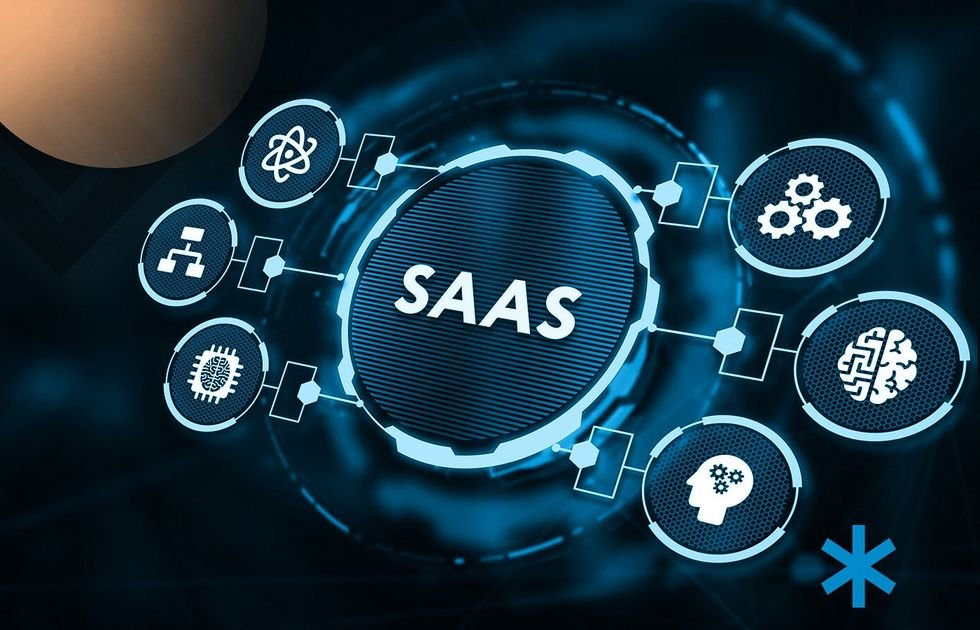Software as a Service (SaaS) has transformed how businesses operate, offering flexibility, scalability, and cost-effectiveness that traditional software models often lack. As cloud computing continues to evolve, more businesses are turning to SaaS solutions to meet their needs. However, while SaaS offers numerous benefits, it also comes with its share of challenges. In this article, we’ll delve into what SaaS is, explore its advantages, and discuss the potential challenges businesses may face.
What is SaaS?
SaaS, or Software as a Service, is a software distribution model where applications are hosted by a third-party provider and made available to customers over the internet. Instead of purchasing and installing software on individual devices, users access the software via a web browser, typically on a subscription basis.
Examples of popular SaaS applications include:
- Salesforce: A leading customer relationship management (CRM) platform.
- Google Workspace: A suite of productivity tools including Gmail, Docs, and Drive.
- Slack: A communication and collaboration platform for teams.
- Zoom: A video conferencing tool used for virtual meetings and webinars.
Benefits of SaaS for Businesses
- Cost-Effectiveness
- SaaS eliminates the need for expensive hardware, software licenses, and maintenance. Businesses can access powerful software solutions for a predictable monthly or annual subscription fee, reducing upfront costs.
- Scalability
- SaaS solutions are highly scalable, allowing businesses to adjust their usage based on demand. As your business grows, you can easily add more users or access additional features without the need for significant investments in infrastructure.
- Accessibility and Flexibility
- SaaS applications can be accessed from any device with an internet connection, enabling remote work and collaboration. This flexibility allows employees to work from anywhere, improving productivity and work-life balance.
- Automatic Updates and Maintenance
- SaaS providers handle all updates, security patches, and maintenance, ensuring that businesses always have access to the latest features and improvements without the hassle of manual installations.
- Integration with Other Tools
- Many SaaS applications offer seamless integration with other software tools, enabling businesses to create a cohesive ecosystem of applications that work together to streamline operations and improve efficiency.
- Security
- Leading SaaS providers invest heavily in security, often offering levels of protection that many businesses would struggle to achieve on their own. This includes data encryption, regular backups, and compliance with industry standards.

Challenges of SaaS for Businesses
- Data Security and Privacy Concerns
- While SaaS providers generally offer robust security, businesses must trust third-party providers with their sensitive data. Concerns about data breaches, compliance with regulations, and the risk of vendor lock-in can be significant challenges.
- Limited Customization
- SaaS solutions are designed to meet the needs of a broad range of users, which can limit the level of customization available to individual businesses. Some organizations may find that SaaS tools don’t perfectly align with their unique processes or workflows.
- Dependence on Internet Connectivity
- SaaS applications rely on internet access, so any disruption to connectivity can impact business operations. This dependency on reliable internet service can be a challenge, especially in regions with unstable connections.
- Subscription Costs Over Time
- While SaaS reduces upfront costs, the ongoing subscription fees can add up over time. For long-term use, businesses need to weigh the cumulative cost of subscriptions against the potential savings and benefits.
- Vendor Lock-In
- Switching SaaS providers can be challenging due to data migration issues, compatibility concerns, and the effort required to retrain staff on new systems. Businesses need to consider the long-term implications of committing to a specific SaaS provider.
- Data Ownership and Control
- In a SaaS model, the data is stored on the provider’s servers, which raises questions about data ownership and control. Businesses must ensure they have clear agreements regarding data access, storage, and retrieval in case they decide to switch providers or bring their data in-house.
Maximizing the Benefits of SaaS
To fully leverage the advantages of SaaS while mitigating its challenges, businesses should:
- Evaluate Providers Carefully: Choose SaaS providers with a strong track record of security, reliability, and customer support. Look for those that offer transparency in their data management practices and compliance with industry standards.
- Understand Pricing Models: Analyze the total cost of ownership over time and compare different subscription plans. Consider the flexibility of scaling up or down based on your business needs.
- Plan for Integration: Ensure that the SaaS tools you select can integrate seamlessly with your existing systems and other tools your business relies on. This will help avoid silos and maximize productivity.
- Backup and Recovery Plans: While SaaS providers offer backups, it’s wise to have your own data recovery plan in place. Ensure you have access to your data and understand how it can be retrieved if needed.
- Monitor Usage and Adoption: Keep track of how well your team is adopting the SaaS tools and whether they are delivering the expected benefits. Continuous monitoring will help you make informed decisions about tool usage and future investments.
Conclusion
SaaS offers a powerful way for businesses to access cutting-edge software without the need for significant upfront investments in infrastructure. While it brings numerous benefits, including cost savings, scalability, and flexibility, it also presents challenges that require careful consideration. By understanding these factors and making informed choices, businesses can effectively harness the power of SaaS to drive growth and innovation in 2024 and beyond.











